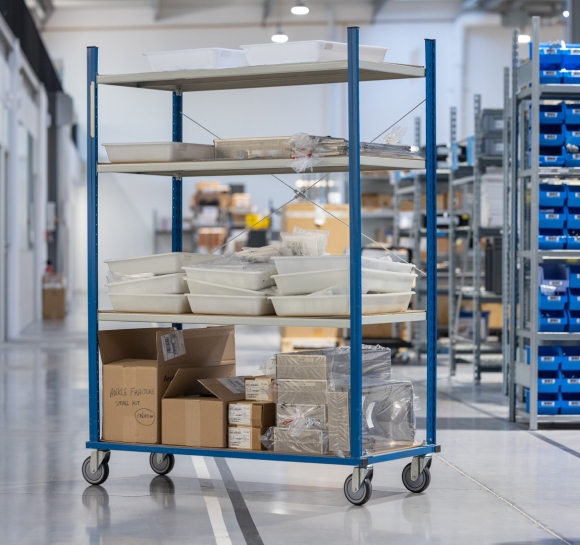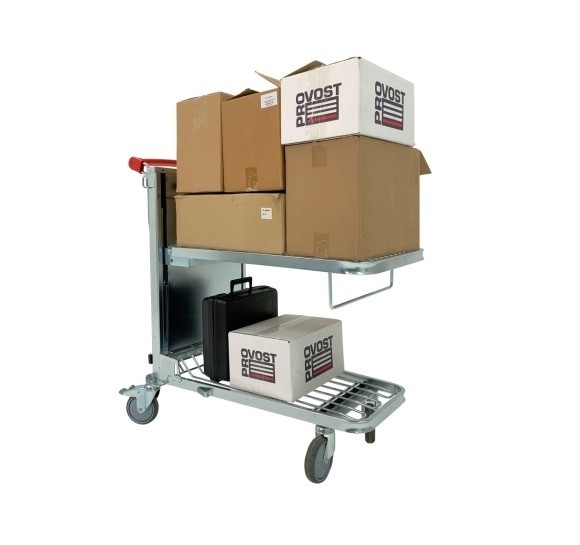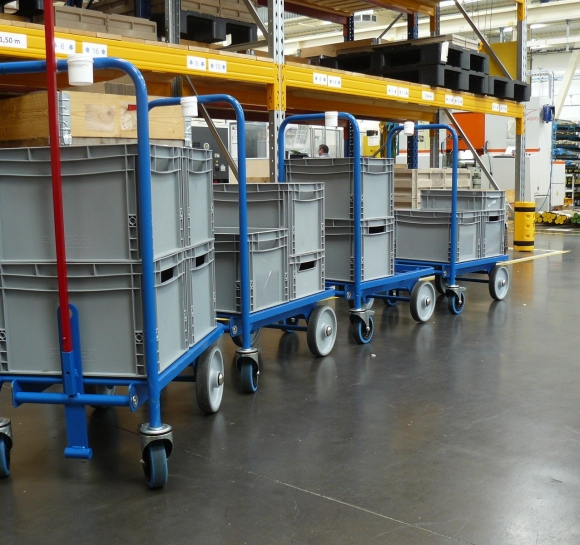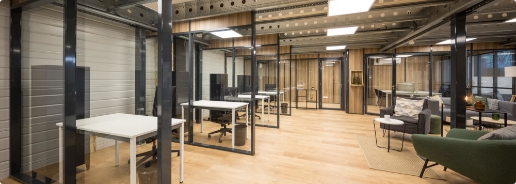
How to choose a forklift?
The industrial truck is an indispensable tool for many professionals in all sectors. Very useful for transporting and moving loads while limiting worker effort, the professional forklift exists in many forms for different types of use.
Platform carts, bulky carts, multi-stage carts, constant-level carts, electric carts... It's sometimes difficult to find your way around such a wide range of industrial trucks, which is why we've put together this guide to help you choose the right cart for your needs.
What are the criteria for choosing a forklift truck?
To choose the forklift truck that's right for you, you need to ask yourself the right questions. There are a number of criteria to take into account when making your decision. All forklifts are different and meet different needs.
Load weight and volume
Depending on the products and goods you wish to transport, the choice of the right forklift will be very different. Some forklifts are specially designed to carry very heavy loads, while others are optimized to move long, bulky loads.
Remember to check that the truck's maximum load capacity is compatible with the products to be handled. Maximum loads are U.R. (uniformly distributed) loads.
Working environment
It's vital to think ahead about the areas in which you'll be using your forklift trucks. Some trucks have wheels for use on specific floors (pneumatic wheels, rubber wheels, polypropylene wheels, etc.) to facilitate load transport.
Don't forget to consider the space you have available for storing the carts, so as not to interfere with your activity.
Safety and the risk of RSI
The comfort of your operators must not be overlooked, as manual handling is a source of musculoskeletal disorders (MSD) and work stoppages.
Some forklifts are designed to limit the effort required to pull, push or lift loads.
Electric forklift models enable loads to be moved effortlessly, while constant-level forklifts keep transported products at gripping height.
Lean manufacturing (optimizing logistics flows)
If you want to optimize your logistics flows by reducing waste, cutting costs and saving time, you can choose forklifts designed for continuous process improvement.
To supply production areas and line edges, you can opt for towable trucks or line-side trucks.
How to choose the various components of your professional cart
A forklift generally comprises at least a platform for depositing the load to be moved, a backrest for handling, and wheels to facilitate movement over the various surfaces it's used on. But all these elements can vary to meet specific needs.

Backrests and sideboards
The backrest
The backrest is the part of the truck that makes it easy to push or pull the load to be moved. On certain models of industrial trucks, a second backrest can be added to allow the load to be gripped from both sides of the truck, and to prevent the goods from slipping and falling off the platform.
Side panels
Side panels are elements placed on the sides of the truck to close it and turn it into a container. They are very practical for stacking loads and preventing them from falling off the cart.

Trays and drawbars
The platform
The platform is the element on which the load is placed. The size of the tray depends on the goods you wish to transport. There are different types of platform (multi-ply wood, non-slip multi-ply wood, etc.).
The drawbar
The drawbar is an optional part of the cart, but it is indispensable for making your cart towable and thus creating small cart trains to facilitate the supply of workstations on the line edges.

The wheels
There are many different types of wheels for your industrial truck. Some castors are better suited than others to particular environments, while others can support very heavy loads... The positioning of the wheels under the platform can vary, which changes the comfort and flexibility of use of the handling equipment.
You can opt for fixed or swivel castors. Fixed wheels are very effective for moving in a straight line, but if you need to move in areas with many curves, swivel castors are recommended.
Wheel material is an important consideration:
- Rubber wheels dampen vibrations on uneven floors.
- Non-staining rubber avoids leaving marks on the floor.
- Polypropylene wheels limit starting effort and are ideal for use on smooth floors.
- Pneumatic wheels provide maximum vibration and shock absorption on uneven floors.
Specific carts

Tiered carts
Highly practical for shelving, order-picking or procurement, multi-level handling trucks can be used to store and move loads on several shelves.
They enable you to position different products at the right height for the operator, by modifying or adding trays.
Some models of stacker trucks can store bins on inclined levels, so that their contents can be better viewed, making picking easier.

Constant-level trucks
It's crucial that your operators have the products they need to handle at the ideal height, especially for heavy loads.
The constant-level cart, also known as a moving-bottom cart, is the perfect solution for picking products at gripping height. The cart automatically raises or lowers the platform to immediately level the products to be handled. This eliminates the need for your operators to bend over to retrieve goods, helping to prevent the risk of musculoskeletal disorders (MSDs) for optimum ergonomics.
It is particularly well-suited to repetitive handling, and saves substantial amounts of time.

Tailor-made carts for your business
For specific needs, it is possible to design handling carts adapted to your professional activity:
- Tool carts or racks: they can accommodate a multitude of storage accessories such as tubular arms or racks, bins, sheet metal boxes and are very useful for workshops.
- Panel carts (for the building industry, for example): for handling flat products such as plasterboard, worktops, etc.
- Towing carts for industry: hook and tow several carts in series to easily supply your line edges in just-in-time mode.
- Carts for specific loads to transport unconventional products with improved ergonomics, safety and scalability.
- Order-picking carts
- In-store shelving carts





